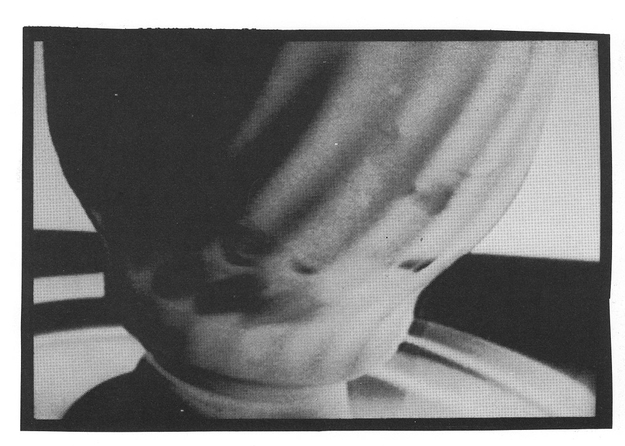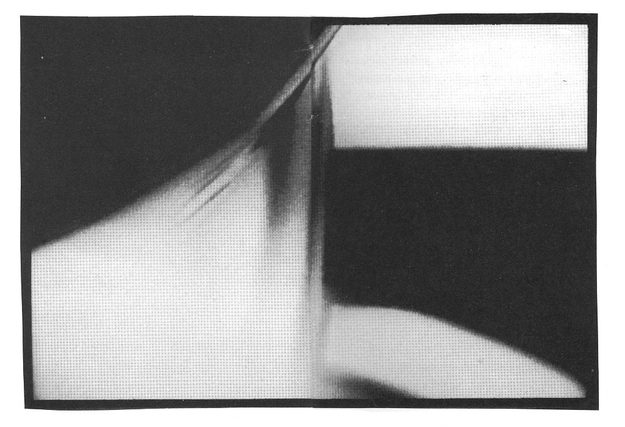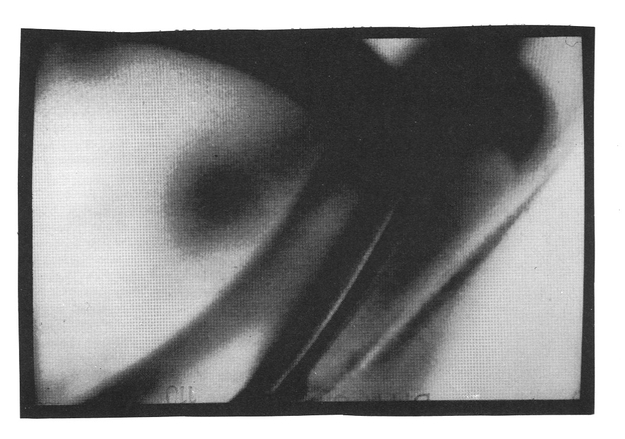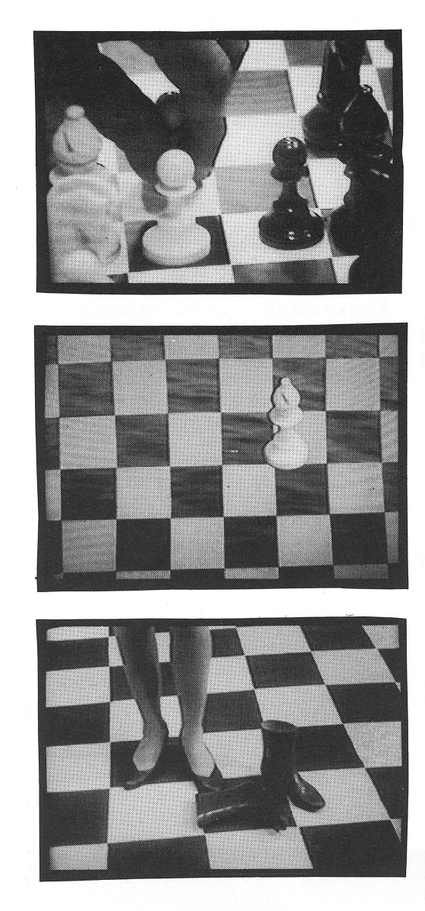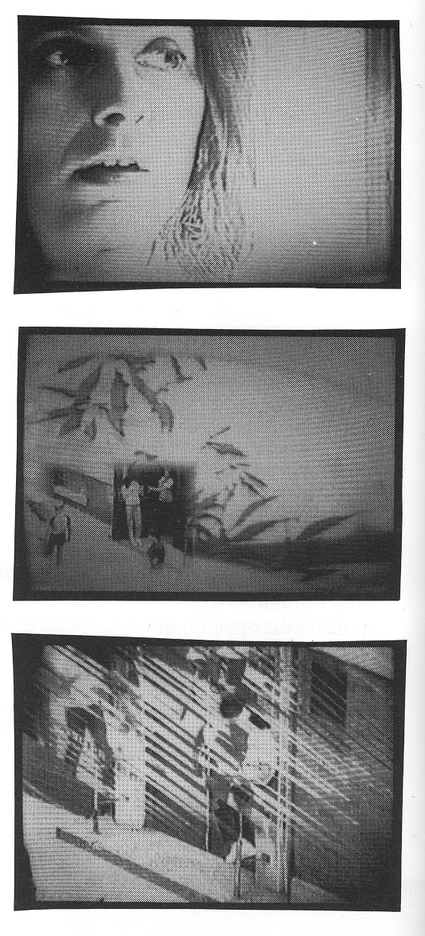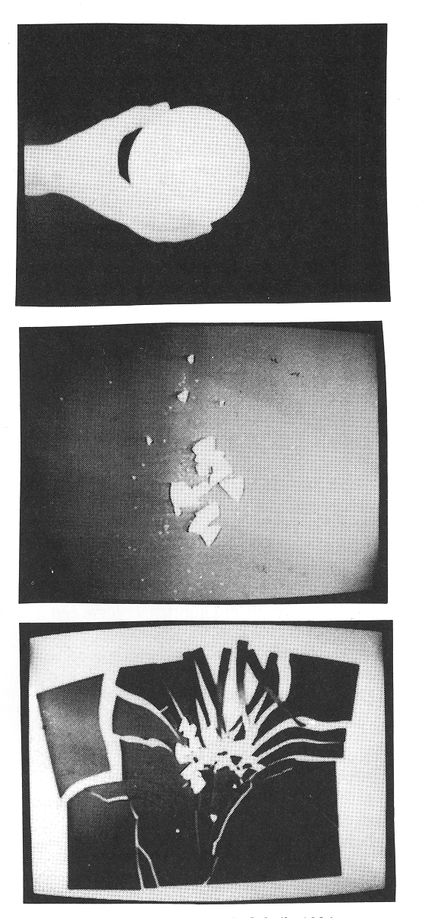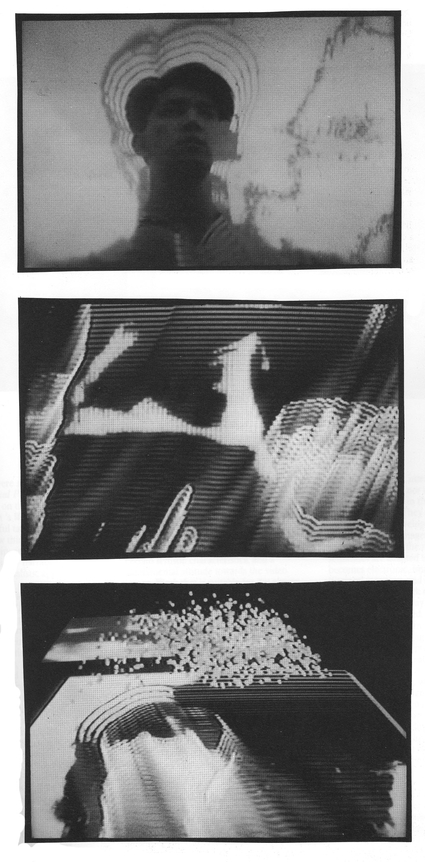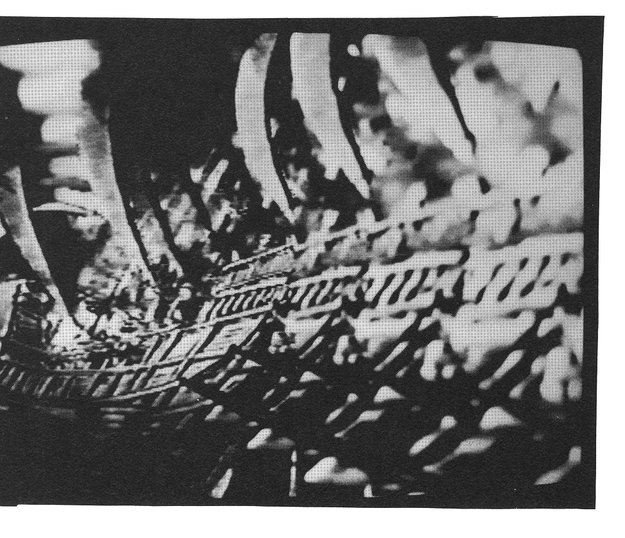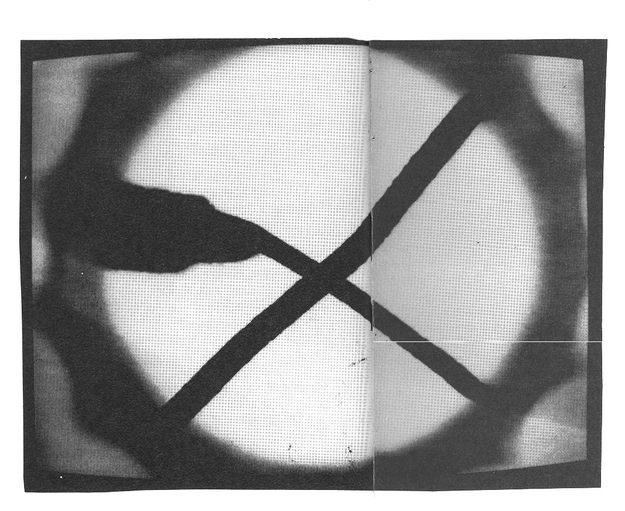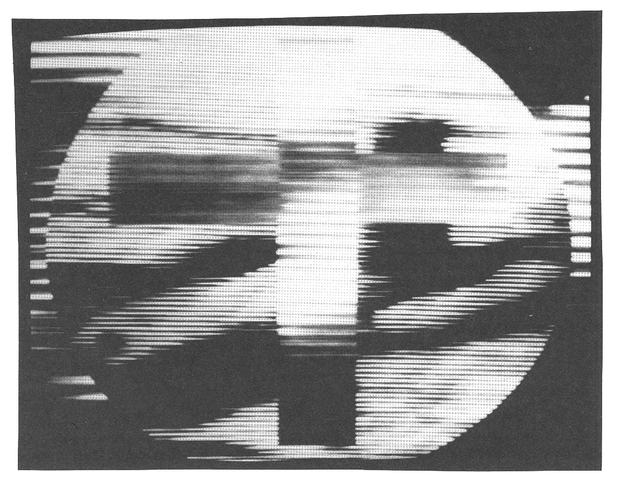When asked about his disappointments, and his expectations of video art, WULF HERZOGENRATH gave the following answer in the catalogue of the Videonale Bonn: The video-clip and its influence on the perception of video art and control Over the television culture! Indeed, but ...is the situation described in this answer a hopeful one, or has video an resigned itself to this situation in disappointment.
HERZOGENRATH's answer is ambiguous, hence not decisive. Still, his sketch of the situation is accurate, although a catalogue is not the place to go into such manners. Video art has indeed been subject to some important ethical and aestherical changes. These changes are so fundamental that they are unsenIing even to the advocates of video art.
On the other hand, self-confidence has increased among video artists. The noisy complaining in the past about the partly conscious evasion of a confrontation with the medium video, has given way to a strong feeling of self-confidence among specialists. This development could be characterized by the title of F. PAUL GRUNERT's painting: Picture, so that bluebottles will not fall asleep from boredom when watching television. Bluebottles and dragonflies perceive 200 times faster than the human eye, so in their eyes, everything seems to pass in super-slow-motion. To keep their adrenalin up to the mark, they need incredibly fast-moving events. The specialists of such a development are the artists of the electronic era.
Competition
This change of generations was clearly noticeable, more so than ever before, at the Videonale Bonn. This Internationale Festival und Wettbewerb für Kunstvideos is still the only one of its kind in West Germany. It offers the possibility for a world-wide orientation in the field of video art. The first festival in 1984 still suffered from financial problems and lack of experience of the organizers, and gave a rather arbitrary picture of the kind of videos that were made in orher countries, but this year there was a representative selection of tapes from Western Europe, The United States, Canada, Scandinavia, Japan, Latin America and the Philipines. The initiators and organizers DIETER DANIELS, BäRBEL MOSER and PETRA UNNüTZER used the past two years for a thorough stocktaking, and for keeping up contacts in Germany and abroad. The results of this work command our respect. The greater financial scope of the festival (among other things, grants from the Ministry of Culture of Nord Rhein Westfalen, the city of Bonn, and the Art Foundation) made it possible for the first time to publish a detailed catalogue. This catalogue contains articles by PETER WEIBEL and BRUCE YONEMOTO , statements of video artists, collectors, theorists and distributors, and descriptions and photographs of the tapes shown at the festival.
The possibility to submit work was again this year open to everyone. However, there was a jury (PHILOMENE MAGERS, WOLFGANG PREIKSCHAT, UWE RüTH, and the organizers) which made a preselection from the 350 tapes that were submitted. Some seventy tapes were eventually admitted to the competition. The final jury (JO EKHARDT, NAN HOOVER, LORI ZIPPAY, REGINA WYRWOLL, ALEX GRAHAM) judged these seventy preselected tapes and awarded the prizes: a cash prize of DM 5000, a production prize and a material prize. Beside the tapes taking part in the competition, the organizers found another seventy tapes worthy to be shown. In addition, video-magazines from France, West Germany, Holland and Yugoslavia, and video art from Latin America and The Philipines were on show.
Without exception, the quality of the selected tapes was good. Apparently the large number of works admitted to the competition caused no problem in maintaining high technical and artistic standards. This proves the increased appeal of the Bonn festival, which can now compare with video festivals with a longer tradition, such as Montbéliard and The Hague. It is remarkable that the jury did not hesitate to exclude work by well-known video artists from the pre-selection. Apart from works submitted without participating in the competition - NAN HOOVER, Watching out, 1986, and GABOR BóDY, Walzer, 1985. Which might have heen candidates for a prize - well-known names such as PETER WEIBEL, Gesänge des Pluriversums, 1986, TONY OURSLER, Evol, 1986, LYDIA SCHOUTEN, Beauty becomes the Beast, 1985 and HERBERT WENTSCHER Alles Bestens II, 1984/5, were absent from the competition. This proves the independent judgement of the jury.
Programme
Some of the tapes that did not participate in the competition (forming the so-called 'programme') were especially worthy of attention. GIORGIO CATTANI (Prisma, 1984) made tapes based on music. Prisma shows a picture split in two parts, accompanied by a minimalistic droning noise. The lower pan of the screen shows the feet of a walking man in realtime. The upper pan shows, in alternating modes of time, associative images that refer to a vague narrative, which only develops in the second half of the tape. MARIA VEDDER and BETTINA GRUBER produced a tape Catfish Tango, 1986, which was commissioned by the ZDF . Cologne humor and funny moral inventions make this, not specifically videographic, tape very entertaining.
Black and White (1985) by SANJA IVECOVIC and DALIBOR MARTINIS fits in the tradition started by Chanoyu in 1983. Its sparkling with very plausibly uses the possibilities for manipulation of the electronic image. This in the form of a merry anarchist story, the clear structure of which leads to an existential chaos, to return again to a (damaged) form of this structure. This tape should have taken part in the competition.
The weakness of the 'programme' was not its quality but its structure. The organization did not make any thematic arrangements. As in the competition, the videos were arranged in alphabetical order. This approach, where no catagories are set up, is quite understandable from the point of view of the organizers. However, it made it more difficult for the spectator to come to grips with the works shown. In addition, a thematic grouping of tapes would offer the possibility to explain in a very simple way the strategy of the festival as regards contents. All the international video festivals organized in Europe first of all want to show the broad 'spectrum' of video. The Bonn festival already restricted itself to video art, thus excluding documentaries etc. This is not a disadvantage, on the contrary. The video 'boom' of the past few years has led to a very obscure and complex state of affairs. However, the restriction to one area of production (and one that is difficult to define at that) is not yet a solution, but only a start. In 1984, the festival's programme was composed of groups of videos from the several participating countries. This gave an idea of the actual situation, because some countries proved to possess very definite stylistic characteristics of their own. In the meantime these differences have almost disappeared, as the Bonn festival made clear. Instead the fact that artists are more and more often involved in TV-programmes, and the high level of development of manipulation technology, has led to a division in the artistic approach to video. It would have been quite possible, for instance, to destill two groups out of all the works submitted: one around the theme suitable for television and another around the theme of electronic manipulation. And there is something else: two years ago the prize- giving ceremony provided publicity for a new generation of video artists, who have increasingly received attention since. Artists such as AXEL KLEPSCH, JEAN-FRANçOIS GUITON and NORBERT MEISSNER not only proved that there is a generation after KLAUS VOM BRUCH, but also that there is a renewed interest in the specifically electronic nature of the (picture) screen. In this regard the Videonale led the way and exhibited the new trend, as it revealed the changing climate of discussion among young artists.
Generation gap
This year's restriction on the 'spectrum' also influenced the jury's selection of prize- winners. The cash-prize was divided among three tapes that were suitable for TV: JOHN ADAMS' Intellectual Properties, 1985, a 56-minute video essay on the theme of power; DARA BIRNBAUM's Will-o-the-Whisp, 1985, a very beautiful tape in which a woman at a window thinks back on a previous relationship; and LLUREX' Ironland, 1986, a video 'narration' of a landscape, with a formalistic approach towards editing.
A pupil of REINER RUTHENBECK, DIETER KIESSLING (Fallende Scheibe 1986) was awarded the production prize, indeed the best - and only - candidate for the prize. Like the cash-prize, the material-prize was shared by three artists: HANNO BAETHE (Fairy Tales, 1986) J.F. GUITON (La Tâche, 1985/6) and IVO DEKOVIC (Linardo, 1985). The following artists received an honourable mention from the jury: MARCEL ODENBACH (As if memories could deceive me, 1986), BILL SEAMAN (Telling Motions, 1986) MARK WILCOX (Celebrities, 1985) GUSZTàV HáMOS (Killer, 1986), FABRIZIO PLESSI (Backwater, 1984), VULTURE VIDEO (Lo Pay No Way, 1985) RAFAEL ORTIZ (Bridge Party, 1985), GORILLA TAPES (Till Death to Apartheid, 1985) SHALOM GOREWITZ (Blue Swee, 1985), and JAMES BYRNE (Lament, 1985).
The judgement of the jury - apart from the quality of the videos submitted - was conservative, and therefore conflicted with the festival's intention. With one exception (BAETHE), all the tapes that might be suitable for TV received awards. Not one of the artists named by the jury was seen as a likely candidate during the festival. This proves that there is a difference in generations where video-aesthetics are concerned. The label suitable for TV implies certain stylistic characteristics, and a fundamental attitude towards the video image. Work that is suitable for TV always has a didactic intention, that is to say, it restricts the use of electrpnic effects, and often has a narrative structure. It is entertaining, does not have too many fast cuts, and often has a lyric ring to it, and meditative images. In this respect it conforms to the ideas about video from the seventies.
Bluebottles and dragonflies
The jury's verdict was a clear denunciation of 'technical fiddling'. Yet it does not take into account that the days of busily experimenting with new effects are past. In the videos of DAN REEVES (A Mosaic For the Kali Yuga, 1986), PAUL GARRIN (A Human Tube, 1986), AXEL KLEPSCH (Doch du bist edel und gut, 1986) or NORBERT MEISSNER (Ai. C., 1985), many technical effects are used. However, the intention behind their use has clearly changed, and this seems to point towards the real future of video. These video artists are outgrowing the documentary function of video. They do not intend to 'communicate' as in the seventies, nor do they want to educate the public in the correct way of 'watching video'. They step in the world of electronics and develop the idiom of the electronic era. Images are created that can only be created by the medium video. The semantics are adapted to video, the language becomes electronic, images lose their 'literary' meaning, and become autonomous. Especially in the work of GARRIN and KLEPSCH, a new way of expression has suddenly been created. Both were clearly influenced by PAIK in their formative years. Now they are disengaging PAIK's video world from its conceptuality, and changing it into a system of meaning.
These were some of the notable aspects of the Videonale Bonn, which has proved to have an important signalling function. The jury was wrong, video is no longer an experimental extension of the mass communication medium television. As far as video is concerned the time is ripe for a new syntax as VERA BóDY writes in the catalogue. Ripe for bluebottles and dragonflies.
If you'd like to quote something: Malsch, Friedemann. "Videonale Bonn." Mediamatic Magazine vol. 1 # 3 (1987).
The catalogue is available at DM 20 trough:
Videonale Bonn Dieter Daniels Kurfürstenstraße 27
5300 Bonn 1
t.0228/220790
Translation: Fokke Sluiter
